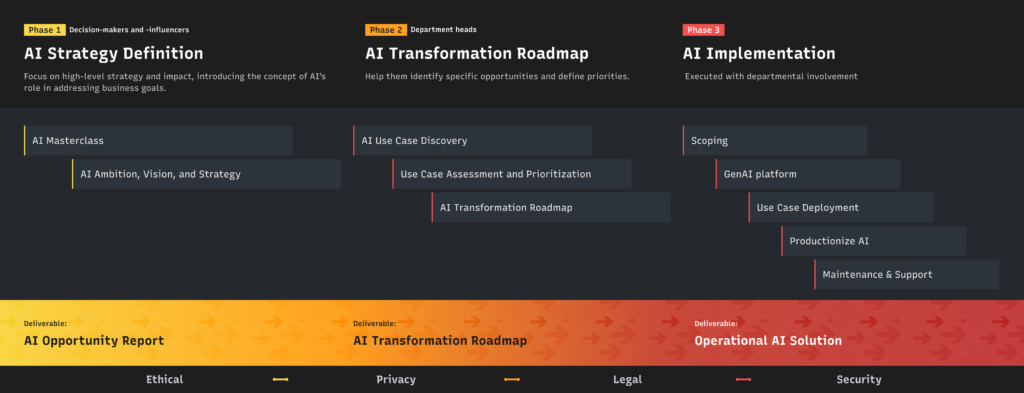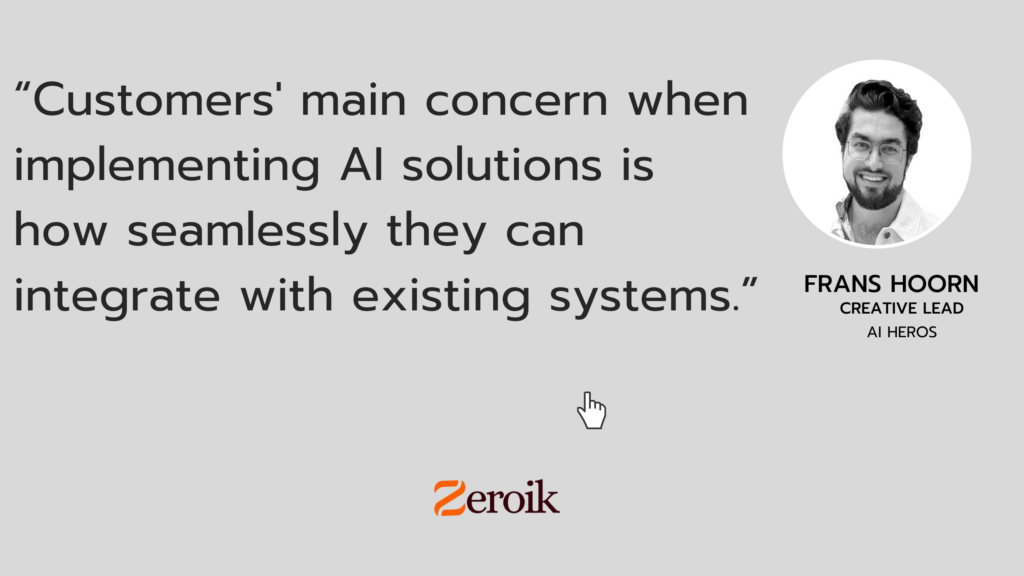Frans Hoorn of AI Heroes shares a three-phase framework for smooth AI adoption: strategy, roadmap, and implementation. Key challenges like integration, data quality, and employee resistance are tackled through structured training and seamless workflow integration. Exciting AI trends include advanced reasoning in LLMs, AI automation, and industry-wide adoption. AI Heroes ensures fairness and transparency with explainable AI, strong governance, and human oversight.
In your experience, what are the most important factors for ensuring a smooth AI adoption process at the enterprise level?
At AI Heroes, we’ve developed a proven three-phase framework that ensures successful AI adoption:
- Phase 1 – AI Strategy Definition: Begin with a clear vision aligned with business objectives
- Phase 2 – AI Transformation Roadmap: Create concrete plans with measurable milestones
- Phase 3 – AI Implementation: Execute solutions with careful scoping and deployment

Key success factors within this framework include:
- Taking an incremental approach, starting with well-defined pilot projects
- Ensuring proper infrastructure and data readiness
- Investing in employee training and change management
What are the common challenges your clients face when implementing AI, and how do you overcome them?
The main challenges we see are:
- Uncertainty about where to start
- Concerns about integration with existing systems
- Data quality and accessibility issues
- Employee adoption resistance

We address these through our structured approach:
- Conducting AI Masterclasses for decision-makers to build understanding
- Performing thorough Use Case Discovery and Assessment to identify quick wins
- Creating detailed transformation roadmaps that ensure seamless integration
- Building solutions that integrate naturally with existing workflows
- Providing comprehensive post-implementation support
Are there any emerging AI trends or technologies that you’re particularly excited about?
We’re particularly excited about:
- Advanced reasoning capabilities in new LLM models that enable more sophisticated decision-making
- AI-powered automation in customer service, where we’ve achieved 70% automation rates with our Callbase tool while improving customer satisfaction
- The democratization of AI tools and bigger open source models like the new Deepseek that allows for wider adoption across different business functions
- Big industries starting to change and adopt AI, like healthcare and ecommerce. We believe we’re still at the start of a new paradigm.
What are some common misconceptions about AI that you encounter when working with new clients, and how do you address them?
The biggest misconceptions we encounter are:
- Implementation requires massive infrastructure changes
- AI solutions need to be complex to be effective
- Only tech companies can benefit from AI
We address these through our practical, results-driven approach, demonstrating how AI augments human capabilities, showing quick-win implementations that work with existing systems, and sharing success stories across various industries.
How do you ensure AI models are fair, transparent, and accountable?
Our approach includes:
- Building explainable AI solutions that users can understand (very important)
- Implementing strong data governance practices and training staff on AI security
- Regular testing and monitoring of our AI models with clear documentation of decision-making processes
- Maintaining human oversight in critical decisions






